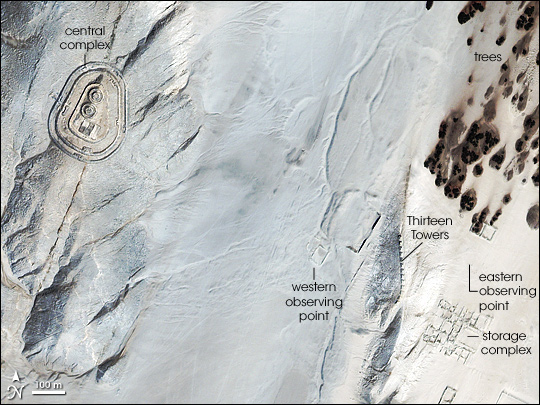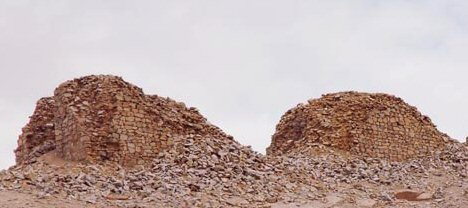Chankillo was a ceremonial centre and solar observatory located within an area of rock outcrops and sand ramps in the Casma-Sechin river valley of arid coastal Peru. Based on a combination of AMS radiocarbon dates and dendrochronological principles from wooden room lintels, the site was constructed between about 2,000 and 2,350 years ago.
Recent archaeoastronomical investigations suggest that the site was partly created to observe the movement of the sun through the solar year, from solstice to solstice. It can be seen on the photo below that all the buildings of the complex show an orientation towards the direction of the December solstice sunrise.
Structures at Chankillo include a 'fortified' temple, a ceremonial-civic area with buildings, a plaza, and storage facilities, and several smaller scattered buildings, within an area of about 4 square kilometres. A 300 meter long hilltop structure with massive walls, restricted gates and parapets is one of the most important component of Chankillo.
Artefacts associated with the buildings and plazas suggest a ceremonial function with recurring feasts at Chankillo. Ceramic panpipes, warrior figurines, serving vessels, and abundant maize and shellfish remains have been found as has rooms built to store corn beer. The ceremonial plaza was clearly intended for large groups of people, while the small viewing platforms were reserved for one or two elite individuals.
The Thirteen Towers:
Chankillo's main astronomical feature is a line of thirteen cubic stone blocks, called the 'Thirteen Towers', arranged along the ridge of a low hill. The line runs due north/south, but the southern-most towers are slightly skewed to the southwest.
A close-up of the Chankillo Towers shows them to be in a ruined state.
The rectangular structures vary in size, from 75 to 125 meters square and 2-6 meters in height, but they are regularly spaced at intervals between 4.7-5.1 m forming a 'toothed' horizon. Each tower has a pair of inset staircases leading to the summits. Excavation of the buildings to the west of the towers revealed one corridor that was clearly an observation point for watching the sun rise over the toothed horizon. The end of the corridor was littered with offerings of pottery, shell, and stone artefacts not found elsewhere nearby, indicating significant rituals associated with solar observations. A building to the east is in the exact mirror position of the western observation point, and is lined up to view the sunsets over the 13 towers.
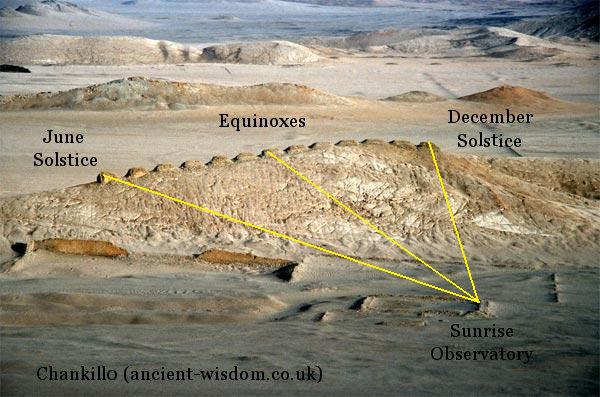
The Towers were built so that an observer could calculate the solar year to perfection.
The Fortress:
The 'Fortress' consists of three concentric walls totalling more than a mile in length, some of them 30 feet high and more than 2 feet thick, around a stone temple devoted to the sun. While it is true that excavations have produced several 'warrior figurines' and the decline of the complex appears to have been marked by an abrupt period of warfare, the term 'Fortress' is debatable as architecturally, the structure shows little in terms of being a defensive building.
The first problem is that despite being on a hill, Chankillo does not command the high ground. The hilltop is northwest of the fort, which would have allowed an invading army to rain sling stones onto defenders manning the fortress's outer walls with little fear of counterattack. Second, the fort has no source of water or place to store food during a siege. As if that isn't enough, the outer wall has five gates to defend, and the second and third walls each have four gates. Rather than putting these entrances in places where the terrain is steep or difficult to cross, they are located where it is easiest to walk or run up the hillside. (2)
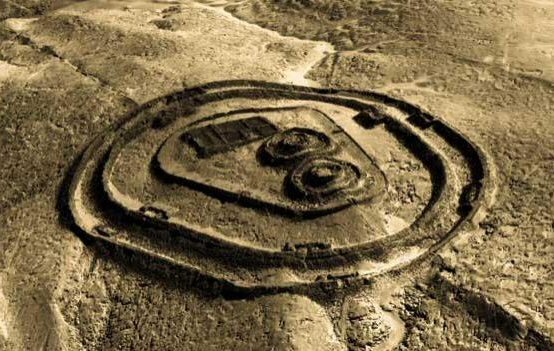
The Chankillo's 'Fortified' Citadel/Complex.
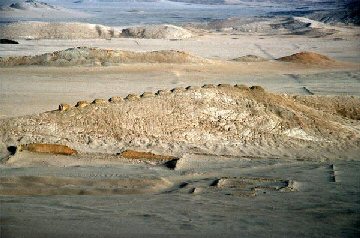 Chankillo:
Chankillo: